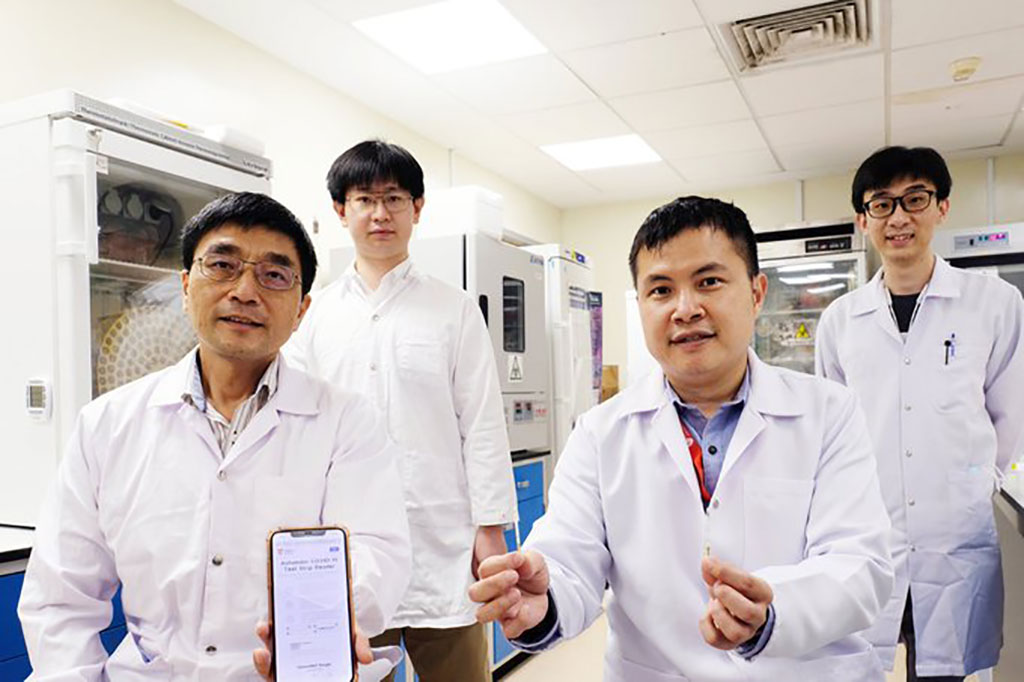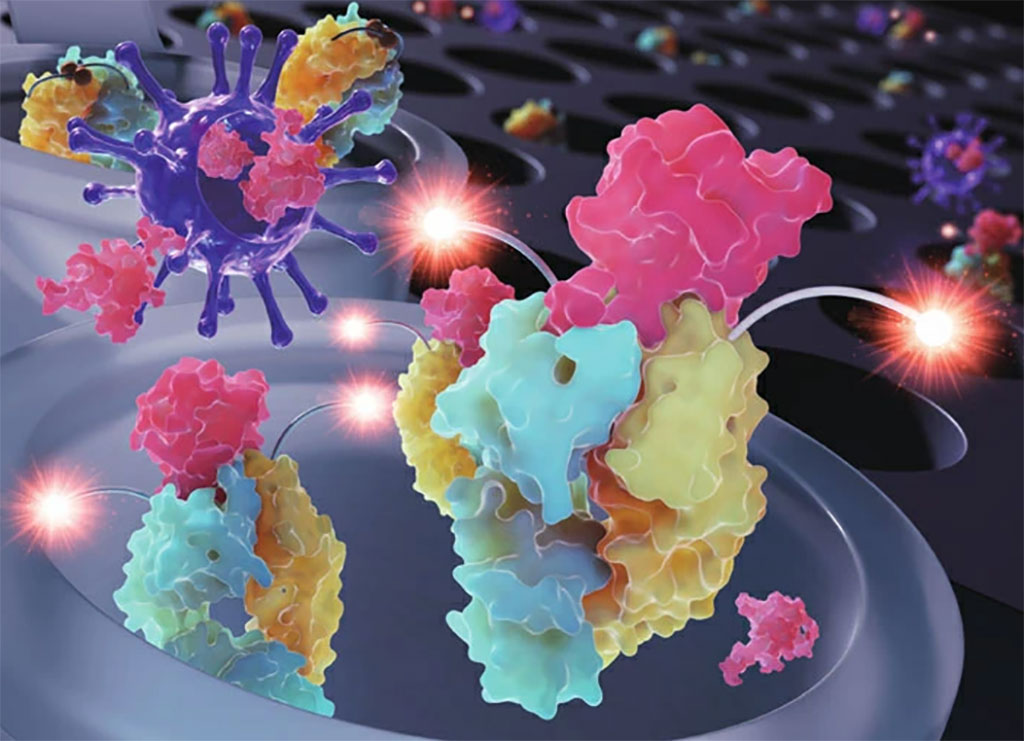New COVID-19 Diagnostic Test Detects SARS-CoV-2 Virus Even When It Mutates
By LabMedica International staff writers
Posted on 30 Mar 2021
Scientists have developed a COVID-19 diagnostic test that can detect the SARS-COV-2 virus even after it has gone through mutations.Posted on 30 Mar 2021
The test called the VaNGuard (Variant Nucleotide Guard) test that has been developed by a team of scientists led by Nanyang Technological University (Singapore) makes use of a gene-editing tool known as CRISPR, which is used widely in scientific research to alter DNA sequences and modify gene function in human cells under lab conditions, and more recently, in diagnostic applications.

Image: Scientists have developed a COVID-19 diagnostic test that can detect the SARS-COV-2 virus even after it has gone through mutations (Photo courtesy of NTU)
The VaNGuard test relies on a reaction mix containing enAsCas12a, a variant of the enzyme Cas12a that acts like a pair of "molecular scissors". The enzyme enAsCas12a is 'programmed' to target specific segments of the SARS-CoV-2 genetic material and to snip them off from the rest of its viral genome. Successfully snipping off segments is how the enzyme 'detects' the presence of the virus. The programming is done by two different molecules known as guide RNAs, which are designed to recognize specific sites on the SARS-CoV-2 genome.
The scientists decided to use two guide RNAs that recognize sequences that are extremely similar between variants of SARS-CoV-2 and that are also unique to the virus. Each guide RNA is computationally predicted to recognize over 99.5% of the thousands of SARS-CoV-2 isolates that have so far been sequenced around the world. So far, the made-in-NTU diagnostic platform can recognise up to two mutations within the target sites on the SARS-CoV-2 genome.
When the SARS-CoV-2 virus or one of its variants is detected in a sample, the engineered Cas12 enzyme variant enAsCas12a becomes hyper-activated and starts cutting other detectable genetic material in the sample as well, including a molecule tagged with a fluorescent dye that is added to the reaction mix. When the molecule is cut, it starts to glow. This glow is picked up by a microplate reader, a lab instrument that can detect and quantify the light photons emitted by the molecule.
In addition to its ability to detect SARS-CoV-2 even when it mutates, the VaNGuard test can be used on crude patient samples in a clinical setting without the need for RNA purification, and yields results in 30 minutes. This is a third of the time required for the gold standard polymerase chain reaction (PCR) test, which requires purification of RNA in a lab facility. The scientists hope that the VaNGuard test can be deployed in settings where quickly confirming COVID-19 status of individuals is paramount. Moving forward, they plan to perform further experiments to further refine their diagnostic kit, obtain regulatory approval from relevant authorities, and commercialize their test in partnership with diagnostic companies.
To make the test easier to use once it has been approved for roll out, the scientists integrated the test into a specially treated paper strip that looks similar to a pregnancy test. The paper strip is dipped into a tube containing the crude nasopharyngeal sample and the reaction mix. In the presence of a SARS-CoV-2 virus or its variant, two strong bands will appear on the paper strip. In the absence of the virus, only one band will appear. The scientists validated the VaNGuard test's ability to detect SARS-CoV-2 variants by synthesizing an RNA sample that has the same mutated sequence as a known SARS-CoV-2 variant. They added different amounts of the synthesized sample to their test and observed two strong bands when the paper strip was dipped into each reaction mix. This indicates that the VaNGuard test is robust against mutated viral sequences. The scientists also developed a mobile phone app to facilitate the interpretation of the paper strips.
"Viruses are very smart. They can mutate, edit, or shuffle their genetic material, meaning diagnostic tests may fail to catch them. Hence, we spent considerable effort developing a robust and sensitive test that can catch the viruses even when they change their genetic sequences," said NTU Associate Professor Tan Meng How, who led the study. "In addition, frequent testing is essential for helping to break the transmission of viruses within populations, so we have developed our tests to be rapid and affordable, making them deployable in resource-poor settings."
Related Links:
Nanyang Technological University













